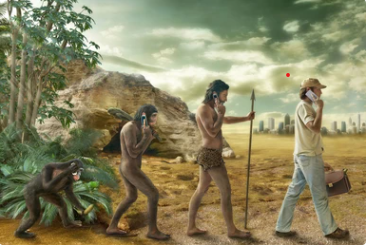Problems affecting transportation technology
As a futurist, I observe the transportation sector grappling with rapid technological changes and evolving customer expectations. Three major trends—electrification, automation, and servitization—are driving this transformation, reshaping how we move both people and goods. This evolution is vital not just for the transportation industry itself but also for businesses across sectors that rely on supply chains dependent on the movement of goods.
Trend 1: Electrification
Transportation is a significant contributor to greenhouse gas emissions, accounting for about 28 percent of total emissions in the U.S. The primary source of these emissions is the burning of fossil fuels, particularly gasoline and diesel. Transitioning to greener vehicles is essential to combat climate change, and this is where electrification comes into play. Electric vehicles (EVs) are rapidly gaining traction; they represented just 6 percent of global automotive sales in 2020, but projections suggest this will increase to 13 percent by 2025 and 22 percent by 2030. Factors such as stricter emissions targets, growing urban populations, improved charging infrastructure, and the declining costs of lithium-ion batteries—down 80 percent since 2010—are driving this mass adoption.
Trend 2: Autonomous, Connected Vehicles
Autonomous vehicles hold the promise of revolutionizing transportation, enhancing road safety, and alleviating congestion. This shift could fundamentally change urban planning; for instance, large parking lots may become obsolete as driverless cars can drop passengers off and return later. While the full realization of autonomous driving is still in progress, several advancements have been made. For example, Elon Musk’s predictions for Tesla’s Level 5 autonomy have proven overly optimistic, yet companies like Waymo have successfully launched fully driverless rides for the public. In freight transportation, companies like TuSimple are conducting trials for autonomous trucks, paving the way for a future where driverless logistics become commonplace.
Trend 3: Servitization
Servitization is a transformative trend impacting various industries, including mobility. With urbanization on the rise and climate concerns intensifying, the traditional model of individual car ownership is becoming less feasible. Ride-sharing services such as Uber and Didi Chuxing are reshaping transportation dynamics, leading to the emergence of Mobility-as-a-Service (MaaS) solutions. These services will offer on-demand transportation options, enabling users to access multiple mobility solutions through a single interface. Imagine a day where you borrow a car for a few hours, switch to an e-scooter for a quick trip, and hop on public transport—all facilitated by one platform. This shift emphasizes access over ownership, and in the future, many urban residents may not feel the need to own a car at all.
In conclusion, advancements in transportation technology—through electrification, automation, and servitization—are poised to significantly reduce environmental impact while enhancing global connectivity. By embracing these trends, we can create a more sustainable and efficient transportation ecosystem that benefits both individuals and businesses worldwide.




